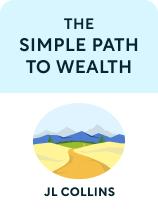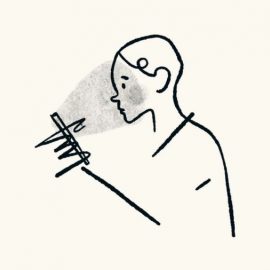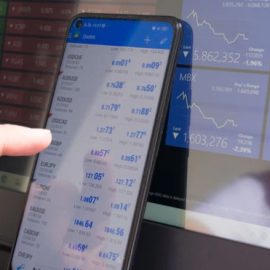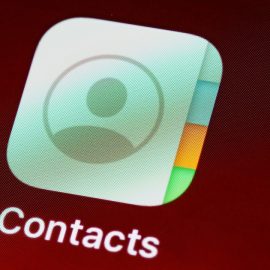

This article is an excerpt from the Shortform book guide to "The Simple Path to Wealth" by JL Collins. Shortform has the world's best summaries and analyses of books you should be reading.
Like this article? Sign up for a free trial here .
Are you struggling to dig your way out of debt? What’s stopping you from clearing it?
Paying off your debts is simple in concept but difficult in practice. In his book The Simple Path to Wealth, blogger and financial expert J. L. Collins gives simple yet sensible advice on how to get rid of debt: scale back your lifestyle and spending to free up money and discipline yourself to stay the course for months or years until the debt is gone.
Keep reading to learn how to pay off your debts in four simple (but not easy) steps, according to J. L. Collins.
The Burden of Debt
Debt has become so common in our society that almost no one questions it. We erroneously see it as normal and even necessary for success (many people believe you should incur “good debt,” such as a mortgage). Banks, credit card companies, car dealers, retailers, and others promote debt because it allows them to sell more products more easily and at a higher price because of the interest they charge.
Besides not being able to accumulate wealth, when you have debt:
- You’re a slave to your employer: You have to stick with your job, even if you hate it, because you have to make debt payments.
- You’re constantly stressed: You feel worried, ashamed, and helpless about how much you owe.
How to Pay Off Debts
In order to pay off your debt, you must significantly downgrade your lifestyle and live frugally to free up the money for debt repayments. When your debt is gone, you’ll be in the habit of living frugally, and it will be easy to shift the money you were paying on debt to saving and investing.
Here are the steps to pay off debt:
- Step 1: List all your debts in order of interest rate with the highest first.
- Step 2: Eliminate all unnecessary spending (coffees, dinners, drinks) so you can put as much as possible toward paying off debts.
- Step 3: Pay the minimum on all debts, then direct any remaining money toward paying down the debt with the highest interest rate first (this saves the most money).
- Step 4: When the highest-interest debt is paid off, focus on the one with the next-highest interest rate, and so on.
Collins differs with popular financial advisor Dave Ramsey in advising on how to get rid of debt. He says that you should pay off the loans with the highest rates first. Ramsey and others tell you to pay off your loans in the order of their size, starting with the smallest ones first. Ramsey contends that starting small and racking up some successes gives you a psychological boost that motivates you to take progressively bigger steps.
But Collins argues that starting small to give yourself the quickest success is a crutch; you’re adapting your methods to your comfort level. Instead, you should become comfortable with the right strategy: in this case, paying off the loans with the highest interest rate first to save the most money.
(Shortform note: For more on the alternate method of paying off debts, read our summary of The Total Money Makeover here.)
What Not to Do
- Don’t use a credit counseling service. These services cost you money, and they don’t have a magic bullet. There’s no escaping that debt reduction is painful and that you’re the one who must do it.
- Don’t consolidate your loans to get a lower interest rate (this is often done for you by credit counselors). Just work hard and fast to pay them off and your rate will soon be zero—which is better than reducing it from 18% to 12% through consolidation and stretching out the loan.
Beware of ‘Good Debt’
A final word about debt: Be cautious when you hear people talking about “good debt.” The three types most often mentioned are:
1) Business loans: Some businesses regularly borrow for reasons such as maintaining cash flow for expenses, financing inventory, or expanding. Borrowing can help a business keep going smoothly. But it’s also risky—it ultimately sinks many businesses. Using debt successfully requires extreme caution.
2) Mortgages: Many people consider getting a loan to buy a house the epitome of good debt. But beware: The easy availability of mortgage loans a decade or so ago, along with encouragement from real estate agents and mortgage brokers, tempted many people into buying houses they couldn’t afford. This contributed to the 2008 financial crisis.
(Shortform note: For more on the origins of the 2008 financial crisis, read our summary of The Big Short here.)
When striving for financial independence, choose the smallest house that meets your needs rather than the largest house you can finance. Remember, the larger the house, the more expensive it will be to live in: Besides the greater mortgage and interest, you’ll pay more in taxes, insurance, utilities, repairs, furnishings, and landscaping. Further, the money you have tied up in paying the mortgage and building equity is money not available for other things. A house isn’t an investment; rather, it’s the biggest expense you can take on. It may or may not be a good financial decision for you.
3) Student loans: College loans trap young people in multiple ways, so do everything you can to avoid them. Students with big loans choose majors and courses of study they think offer the best chance of getting a job so they can pay off their loans, rather than studying what interests them. They’re later stuck in jobs they may not like in order to make the payments. Further, the debt payments eat up money they could be saving and investing for financial freedom. Unlike other kinds of debt, you can’t escape college loans—bankruptcy can’t erase them and wages and even Social Security can be garnished to pay them. College loans basically consign a generation to servitude.

———End of Preview———
Like what you just read? Read the rest of the world's best book summary and analysis of JL Collins's "The Simple Path to Wealth" at Shortform .
Here's what you'll find in our full The Simple Path to Wealth summary :
- A simple road map to achieving financial independence and a secure retirement
- How to put your money to work for you as your “servant”
- Why you don't need a financial advisor to help you invest






